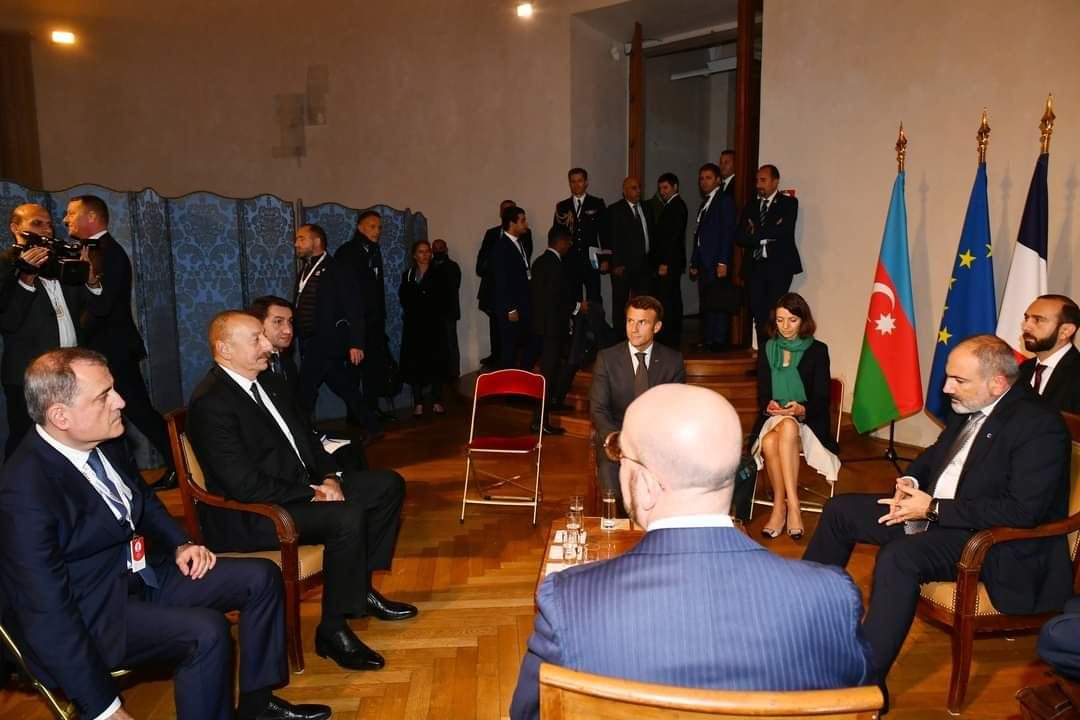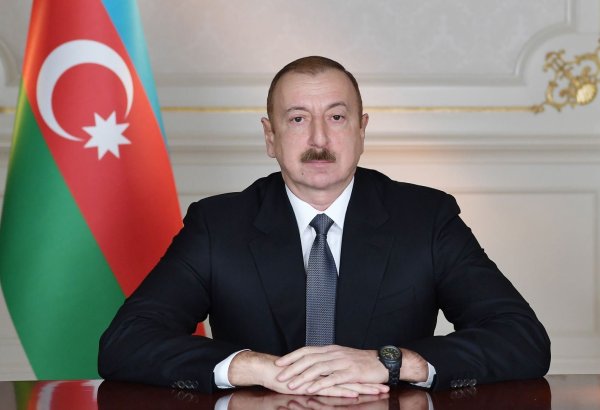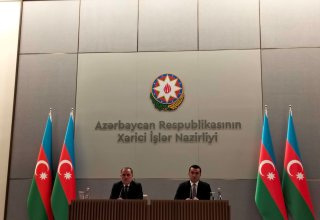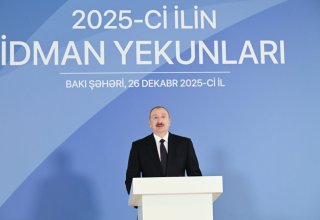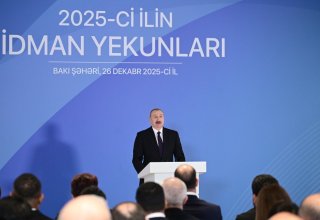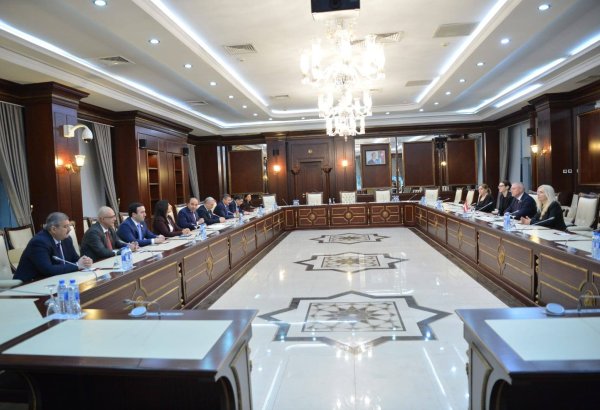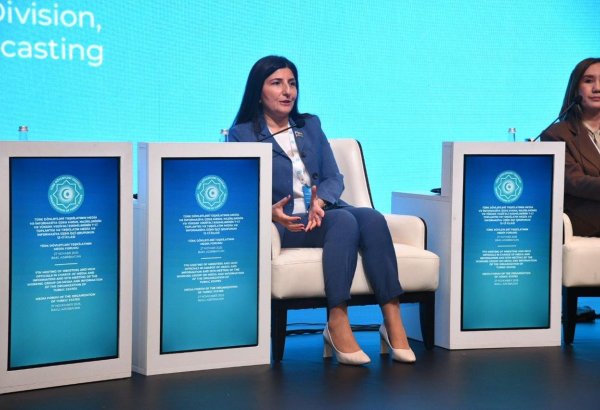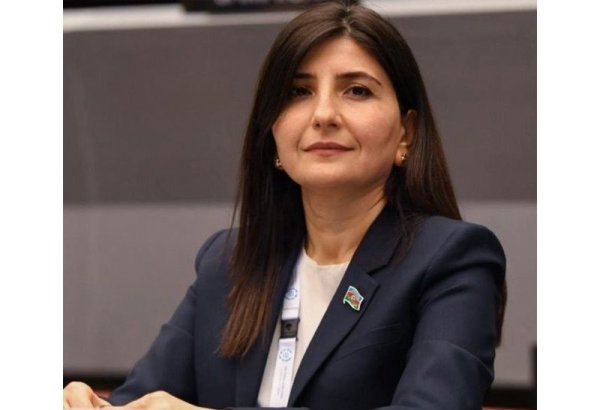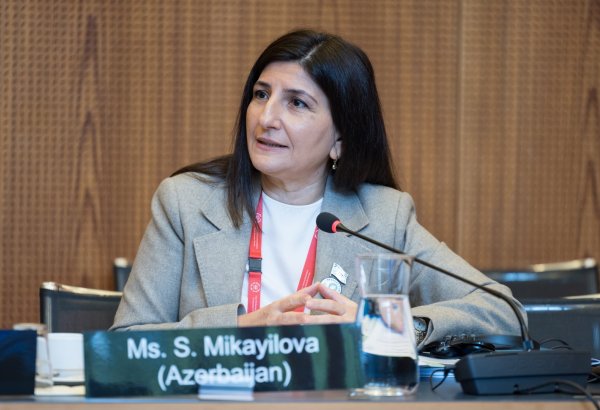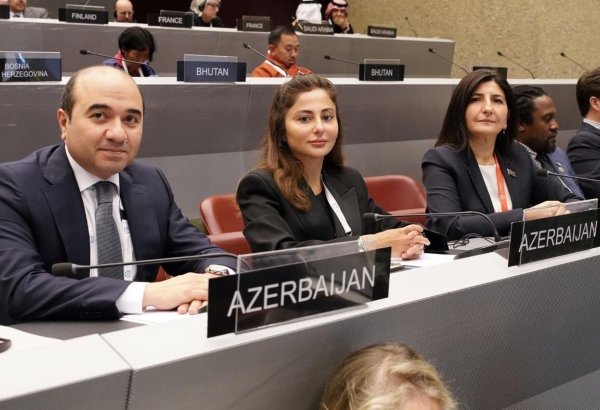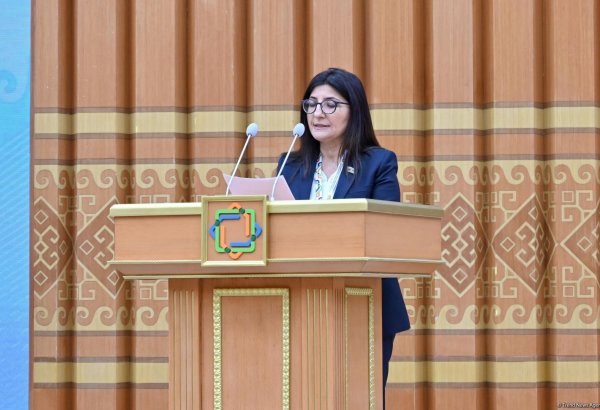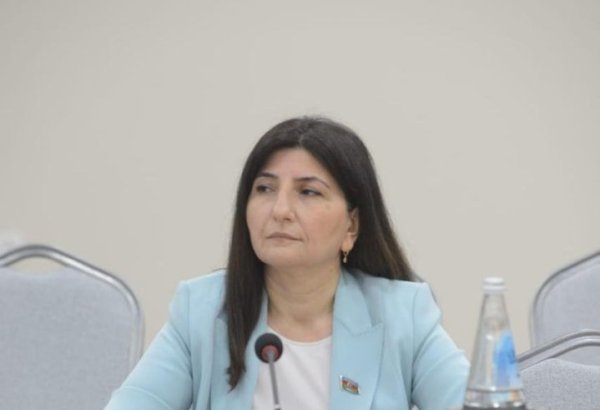BAKU, Azerbaijan, October 8. The October 6, 2022, quadrilateral Prague meeting among Azerbaijani President Ilham Aliyev, Armenian Prime Minister Nikol Pashinyan, French President Emmanuel Macron, and European Council President Charles Michel on the fringes of the first European Political Community Summit, achieved the desired effect at least at this stage to bring about the lasting peace to the war-ravaged region.
This is stated in an article of Member of Azerbaijani Parliament Sevil Mikayilova published by Azernews English-language newspaper, Trend reports.
Peace has never been so close to ending the 30-year-long savage conflict between Azerbaijan and Armenia over the latter’s illegal territorial claims that led to the occupation of nearly 20 percent of territories with 1m people driven out of their ancestral lands.
As stipulated in international laws and norms, Azerbaijan, on the one hand, succeeded in regaining the occupied lands militarily in the 44-day-long second Karabakh war of 2020, on the other hand, Baku’s stunning victory over the Armenian aggressors automatically led to the fulfillment of unacted four UN Resolutions, calling for the immediate withdrawal of the occupying forces from Azerbaijani territories.
Now once Azerbaijan’s triumphant military forces have accomplished the gigantic task of retaking back most of the seized lands, official Baku is determined to promote its peace agenda, as befits the victors, to secure lasting peace in the region, and refocus the attention on rebuilding destroyed villages and towns in wider Karabakh to create brand new infrastructure facilities through realizing new projects based on newfangled ideas.
The bloody conflict, instigated by Armenia, also cost Azerbaijan dearly across the board. Its tragic outcome claimed thousands of lives, colossal destruction, and plundering of national resources, torpedoing all-out efforts to rebuild the nation that restored sovereignty three decades ago.
The unfolding situation in the South Caucasus is showing signs of optimism that the parties can ultimately turn a new page by signing a peace deal to end enmity and start a new era of co-existence in peace and stability by channeling efforts into healing past wounds to lay the foundation of future progresses built on good-neighborly ties and cooperation for the sake of future generations.
In a statement following the quadrilateral meeting, Armenia and Azerbaijan confirmed their commitment to the Charter of the United Nations and the 1991 Alma Ata Declaration, recognizing each other’s territorial integrity and sovereignty. This will be the basis for the border delimitation commissions' work and the next border commissions' meeting slated for late October in Brussels.
There was an agreement by Armenia to facilitate a civilian EU mission alongside the border with Azerbaijan and the latter agreed to cooperate with the mission as far as it is concerned. The mission will start in October for a maximum of two months and it aims to build confidence and, through its reports, contribute to the border commissions.
Immediately after the meeting, OSCE Secretary General Helga Maria Schmid welcomed the results of the quadrilateral meeting between Armenia and Azerbaijan.
“This is an important step towards lasting peace in the region. We support the agreed measures. The OSCE stands ready to contribute to the peace process,” Mrs. Schmid tweeted.
In 1992, the OSCE Minsk Group was mandated to mediate peace talks between the two archenemies to hammer out a peace agreement and put an end to the Karabakh conflict. However, the mediators failed to accomplish their mission, and the status quo, that is, the occupation of the Azerbaijani lands, ended when the nation went to war to regain the occupied lands by force. Consequently, the post-war realities call for new approaches to outstanding problems, and the services of the still-born institution naturally became uncalled for, thus rendering the OSCE Minsk Group’s mission useless.
The OSCE Minsk Group mission was a fiasco and ineffective to solve such complicated issues, while the UN did not take the necessary measures to have the four UNSC Resolutions honored. The use of force was inevitable and Azerbaijan resorted to it after realizing that the talks were useless and reached a dead end.
Established in 1992 by the consent of the parties to the conflict, at the outset, the OSCE Minsk Group instilled hopes for a productive outcome, however, as time passed, the group proved reluctant to act on the mandate and thus paved the way for the military solution to the conflict in line with the UN charter.
Over 1 million Azerbaijani refugees and IDPs hoped for nearly 30 years for the OSCE MG to play its role in serving justice though it proved the other way around. The OSCE Minsk Group vowed to find the resolution based on the UN Security Council resolutions, which demanded Armenia withdraw its troops from the Azerbaijani territory and allow the return of IDPs to their native lands.
However, this did not happen. Each year, the mediators with their inactivities diminished hopes for a peaceful solution and instigated a bloody conflict. As the conflict was becoming “antiquated”, the people of Azerbaijan understood the uselessness of the Minsk Group, which was popularly dubbed as a tourist group traveling the region.
Each visit of the co-chairs made up of Russian, US, and French representatives only cemented the status quo. The declarative statements issued at the end of each visit or meeting were almost identical to the previous ones except for certain new terms unable to change the whole content.
Such a mediation mission neither pushed forward the peace process nor altered the situation for the better. Diplomacy and peace negotiations are unique ways of avoiding bloodshed and victims. This is the major reason behind preferring lengthy and often long-drawn-out peace processes to prevent killings and destruction. However, this choice of Azerbaijan failed to materialize concerning the Karabakh conflict, locking all the windows on a peaceful solution.
Fresh opportunities are emerging now with the liberation of Azerbaijani territories from the Armenian occupation, and the nation is determined to benefit from all the opportunities to reap benefits.
The OSCE Minsk Group proved unfit as an institution to cope with the task, driven by the desire to serve the interests of individual member nations, who have their preferences and choices about Azerbaijan and Armenia.
Although MG was made up of nine member nations, the task of finding a solution to the conflict was with Russia, France, and the USA. It often led to an impression that the OSCE MG was under the monopoly of the countries with definite or indefinite interests in terms of the resolution of the conflict.
The lack of initiatives and effective coercive tools and mechanisms was another problem for the group to fail in succeeding in its task. Above all, the group was torn apart by the infighting of the co-chairing nations driven by their own states’ approach to the region and the conflict as a whole.
After a 30-year-long unsuccessful mission, one cannot but still be amazed at the stubbornness of the group that insists on a similar role, for which there is absolutely no need by virtue of the brilliant performance of the 44-day iron fist.








